Make and model
Information about the brand, model and alternative names of a specific device, if any.
Dimensions (edit): 71.3 x 146.2 x 8 mm | Dimensions (edit): 72.3 x 145.8 x 8.1 mm |
|
| Alternative names | SM-J530F J530F | SM-J5108 J5108 SM-J510F J510F SM-J510G J510G SM-J510UN J510UN |
Design
Information about the dimensions and weight of the device, presented in different units of measurement. Used materials, offered colors, certificates.
SIM card
The SIM card is used in mobile devices to store data that certifies the authenticity of mobile service subscribers.
Mobile networks
A mobile network is a radio system that allows multiple mobile devices to communicate with each other.
| GSM | GSM 850 MHz GSM 900 MHz GSM 1800 MHz GSM 1900 MHz | GSM 850 MHz GSM 900 MHz GSM 1800 MHz GSM 1900 MHz |
| TD-SCDMA | - | TD-SCDMA 1880-1920 MHz TD-SCDMA 2010-2025 MHz |
| UMTS | UMTS 850 MHz UMTS 900 MHz UMTS 1700/2100 MHz UMTS 1900 MHz UMTS 2100 MHz | UMTS 850 MHz UMTS 900 MHz UMTS 1900 MHz UMTS 2100 MHz |
| LTE | LTE 800 MHz LTE 850 MHz LTE 900 MHz LTE 1800 MHz LTE 2100 MHz LTE 2600 MHz | LTE 1800 MHz LTE 2100 MHz LTE-TDD 2300 MHz (B40) LTE-TDD 2500 MHz (B41) LTE-TDD 2600 MHz (B38) LTE-TDD 1900 MHz (B39) (SM-J5108) LTE 2600 MHz (SM-J510G) LTE 850 MHz (SM-J510G) LTE 900 MHz (SM-J510G) LTE 700 MHz (B28) (SM-J510G) |
Mobile technology and data rates
Communication between devices in mobile networks is carried out using technologies that provide different data rates.
Operating system
An operating system is the system software that controls and coordinates the operation of the hardware components on a device.
| Operating system (OS) | Android 7.0 Nougat Android 8.0 Oreo | Android 5.1 Lollipop Android 6.0.1 Marshmallow Android 7.0 Nougat Android 7.1.1 Nougat |
SoC (System on a Chip)
A system on a chip (SoC) integrates all the major hardware components of a mobile device into a single chip.
| SoC (System on a Chip) | Samsung Exynos 7 Octa 7870 | Qualcomm Snapdragon 410 MSM8916 |
| Technological process | 14 nm | 28 nm |
| Processor (CPU) | ARM Cortex-A53 | ARM Cortex-A53 |
| Processor size | 64 bit | 64 bit |
| Instruction set architecture | ARMv8-A | ARMv8 |
| Level 0 cache (L0) | - | 4KB + 4KB |
| Level 1 cache (L1) | - | 16 kB + 16 kB |
| L2 cache | - | 2048 kB 2 MB |
| Number of processor cores | 8 | 4 |
| CPU clock speed | 1600 MHz | 1200 MHz |
| Graphics processing unit (GPU) | ARM Mali-T830 MP2 | Qualcomm Adreno 306 |
| Number of GPU cores | 2 | - |
| GPU clock speed | - | 400 MHz |
| Volume random access memory(RAM) | 2 GB | 2 GB |
| Memory type (RAM) | LPDDR3 | LPDDR3 |
| Number of RAM channels | Two-channel | Single channel |
| RAM frequency | 933 MHz | 533 MHz |
Built-in memory
Each mobile device has built-in (non-removable) fixed memory.
Screen
The screen of a mobile device is characterized by its technology, resolution, pixel density, diagonal length, color depth, etc.
Sensors
Different sensors perform different quantitative measurements and convert physical metrics into signals that can be recognized by the mobile device.
Main camera
The main camera of a mobile device is usually located on the back of the body and is used for photo and video shooting.
| Sensor model | Sony IMX258 Exmor RS | - |
| Sensor type | CMOS | CMOS |
| Sensor size | 4.73 x 3.49 mm 0.23 in | - |
| Pixel size | 1.137 μm 0.001137 mm | - |
| Crop factor | 7.36 | - |
| ISO (light sensitivity) | 100 - 800 | - |
| Diaphragm | f / 1.7 | f / 1.9 |
| Focal length | 3.71 mm 27.3 mm * (35 mm / full frame) | 3.7 mm |
| Flash type | LED | Dual LED |
| Image Resolution | 4160 x 3120 pixels 12.98 megapixels | 4128 x 3096 pixels 12.78 megapixels |
| Video Resolution | 1920 x 1080 pixels 2.07 megapixels | 1920 x 1080 pixels 2.07 megapixels |
| Video - frame rate / frames per second. | 30 frames / sec | 30 frames / sec |
| Specifications | Autofocus Burst shooting Digital zoom Geographic tags Panoramic shooting HDR shooting Touch focus Face recognition Adjusting the white balance ISO setting Exposure compensation Self-timer Scene selection mode | Autofocus Burst shooting Digital zoom Digital image stabilization Geographic tags Panoramic shooting HDR shooting Touch focus Face recognition Adjusting the white balance ISO setting Exposure compensation Self-timer Scene selection mode |
Additional camera
Additional cameras are usually mounted above the screen of the device and are used mainly for video calls, gesture recognition, etc.
Audio
Information about the type of speakers and audio technology supported by the device.
Radio
The radio of the mobile device is a built-in FM receiver.
Wi-Fi
Wi-Fi is a technology that enables wireless communication for transferring data over short distances between various devices.
USB
USB (Universal Serial Bus) is an industry standard that allows different electronic devices to exchange data.
Connecting devices
Information about other important connection technologies supported by the device.
Browser
A web browser is a software application for accessing and viewing information on the Internet.
Video file formats / codecs
Mobile devices support different video file formats and codecs, which respectively store and encode / decode digital video data.
Battery
Mobile device batteries differ in their capacity and technology. They provide the electrical charge required for their function.
| Capacity | 3000 mAh | 3100 mAh |
| Type of | Li-Ion (Lithium-ion) | Li-Ion (Lithium-ion) |
| Talk time 2G | 21 h 1260 minutes 0.9 days | - |
| Standby time 2G | 460 h 27600 mins 19.2 days | 369 h 22140 minutes 15.4 days |
| Talk time 3G | 21 h 1260 minutes 0.9 days | - |
| 3G standby time | 460 h 27600 mins 19.2 days | 369 h 22140 minutes 15.4 days |
| Adapter output power | 5V / 1.55A | 5V / 1.55A |
| Specifications | Non-removable | Removable |
Samsung adopted a new smartphone strategy two years ago. This resulted in Galaxy flagships S7 and S7 edge, as well as A-series models (A3, A5 and A7) medium price segment... After making sure of the correctness of the chosen direction, as evidenced by the growth in sales, Samsung took up the line relatively affordable smartphones by unveiling the 2016 Galaxy J5 and Galaxy J7. Thus, the new items received new body materials, a more productive platform, an improved camera and a more capacious battery. Let's see how it all works in practice.
Design and construction
Traditionally for Samsung, the design of the Galaxy J5 and Galaxy J7 is similar to the older models of the company, the shape and style of the 2016 A-series are easily recognizable in it. Thanks to this, unlike last year's versions, the new smartphones look much nicer, their design has become stricter and no longer seems like a “toy” one.

This also applies to the feeling of use. The materials in the Galaxy J5 and J7 are not just plastic. Apart from the bezel covered with glass, the frames of smartphones are made of metal.
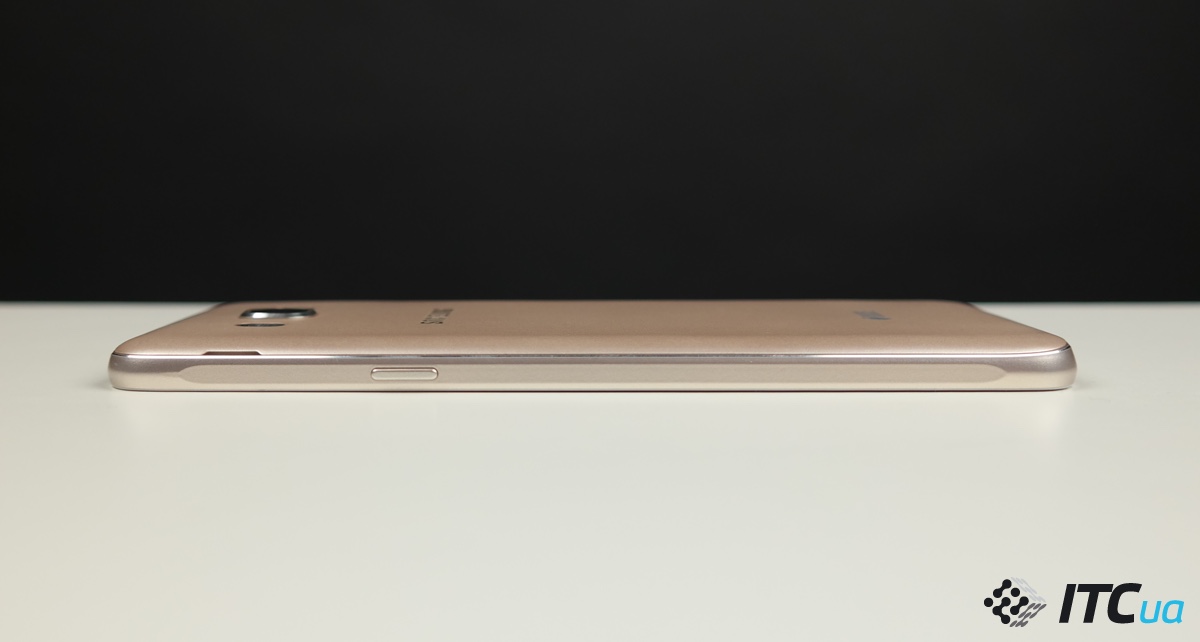
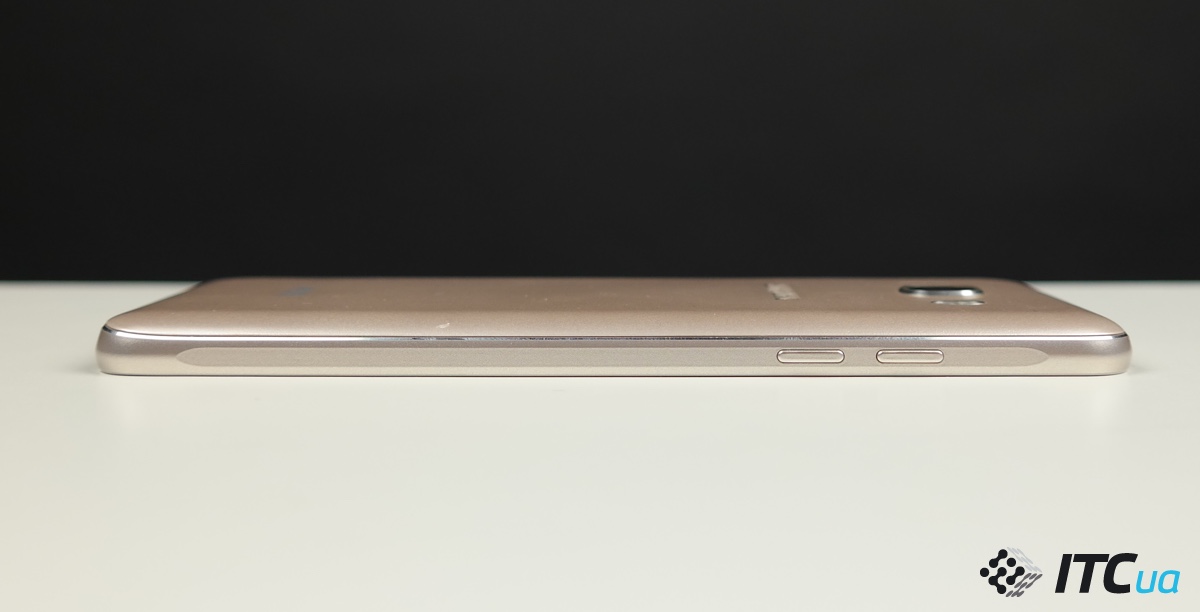


Design Galaxy cases The J5 and Galaxy J7 date back to the Galaxy Alpha. Their back is covered with a thin plastic cover, which fits very tightly to the body. Due to the fact that flexible plastic is superimposed on a rigid base, the structure seems to be non-separable. In fact, by detaching the case cover, you can access the battery, two slots for micro SIM and one for microSD.

By the way, one cannot but praise the developers for a separate memory card slot, which is often combined with a SIM, forcing the user to make a choice either in favor of additional number, or memory.

Galaxy J5 and J7 control keys are the same as others Samsung models... On the right side there is a power key, on the left - volume control. Under the display you can find a mechanical Home button, as well as touch keys. The latter, unfortunately, do not have backlighting.

In general, the Galaxy J5 and Galaxy J7 look good, while from the older models they received not only the design, but also the metal in the case, as well as good build quality.
Display
The Galaxy J5 has a 5.2-inch Super AMOLED touchscreen display with a resolution of 1280x720 pixels (282 ppi). The Galaxy J7 uses the same sensor, but with a 5.5-inch diagonal (267 ppi).
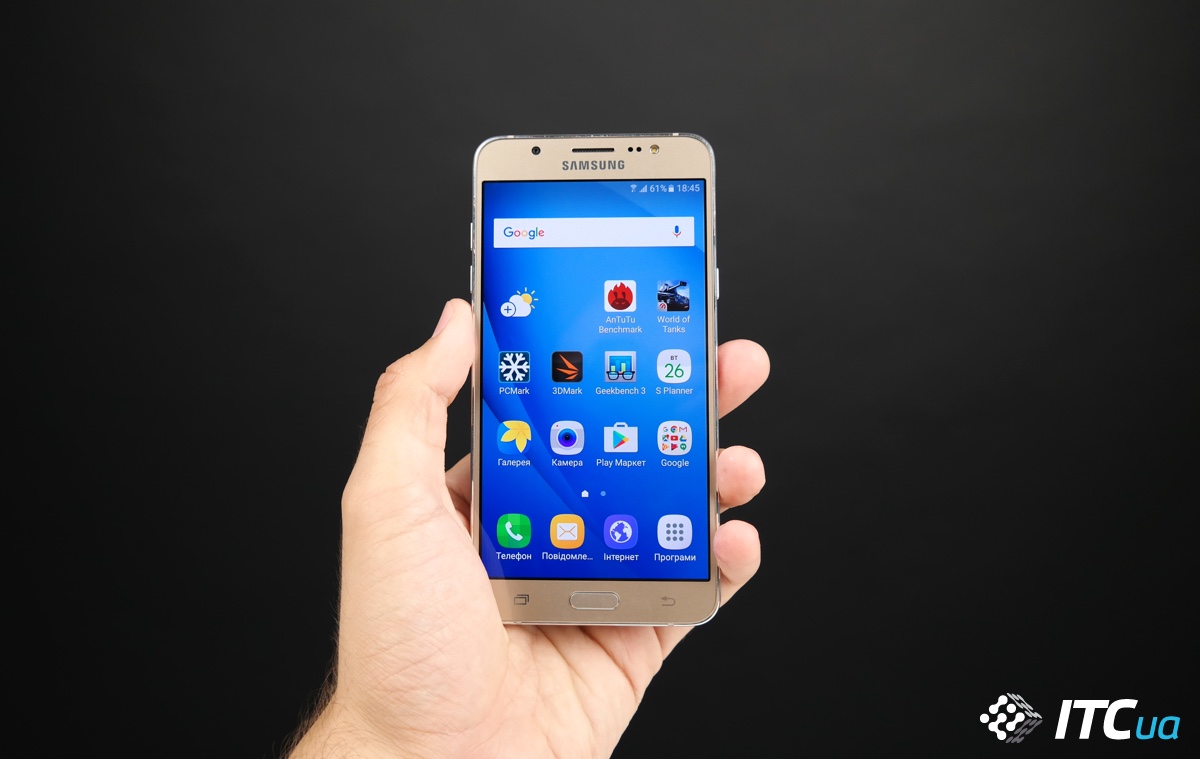
Despite the HD resolution, the information on the screens is readable, the fonts do not seem grainy, unless you bring smartphones very close to your eyes, then PenTile becomes noticeable. The quality of the displays is traditional for Super AMOLED, they have excellent viewing angles and good color reproduction, which can be adjusted. In the "Adaptive display" mode, the image is rich and colorful, but colder (7500K) and with a pronounced bias in blue.




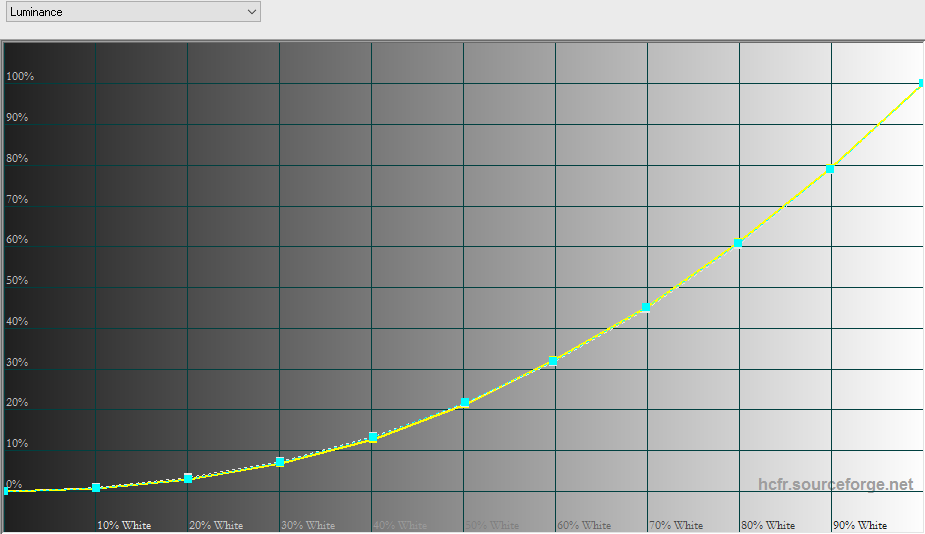



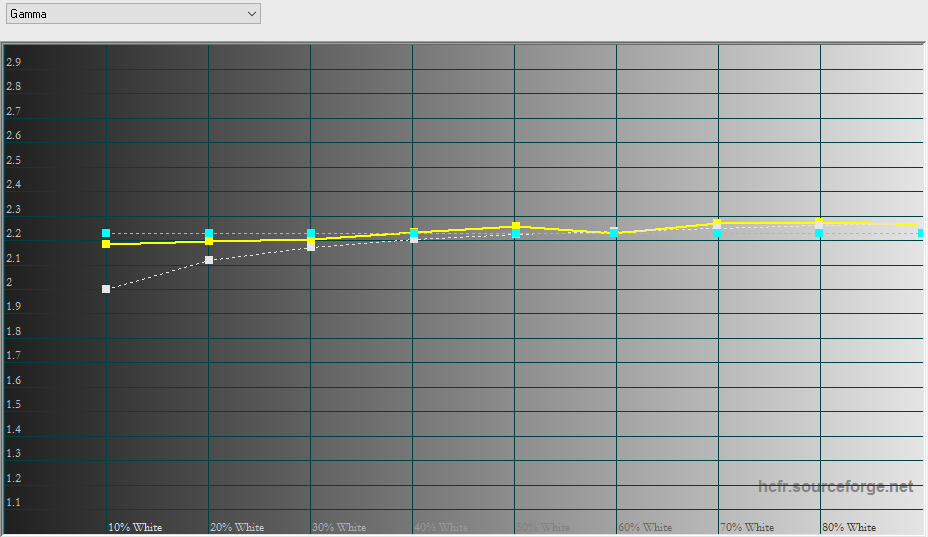
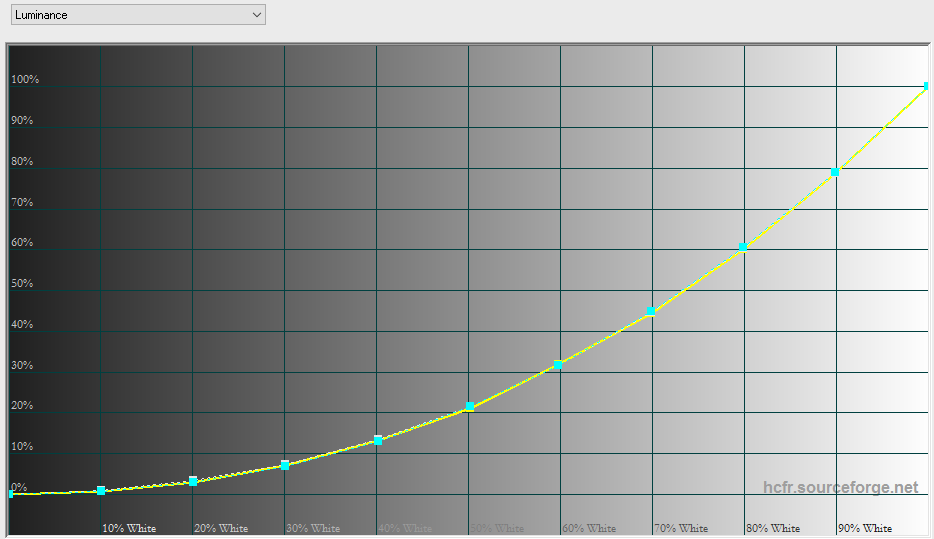
However, if you switch to the "AMOLED Photo" mode, the picture on both displays will become closer to natural.





Minimum brightness Galaxy screens J5 and J7 reaches 4 cd / m2, and the maximum is 353 cd / m2.

But in the notification panel next to the brightness control there is a button for activating the "Outdoor" mode, which increases the display brightness of the J5 to 400 cd / m2, and the J7 to 434 cd / m2. This allows the screen to remain readable even in bright sunlight.
Hardware and software platforms
In terms of the platform, Samsung Galaxy J5 (2016) completely repeats last year's Galaxy A5, it has a 4-core Qualcomm processor Snapdragon 410 1.2 GHz, 2 GB of RAM and 16 GB of internal memory, which can be expanded with microSD cards. The performance of this platform is more than sufficient for running applications and arcade games. But if you plan to play ported to Android games from PCs like Star Wars KOTOR or Banner Saga, Galaxy J5 won't pull them. In the same World of Tanks on a smartphone, you can play only on the minimum settings. In synthetic tests, J5 shows the following results:



Galaxy J7 (2016) is based on Samsung's own platform - this is an 8-core Exynos 7 Octa (7870) chip with a frequency of 1.6 GHz, as well as Mali-T830 MP graphics. It is complemented by 2 GB of RAM and 16 GB of internal memory, which can also be expanded with microSD cards. The performance of the Galaxy J7 is better than that of the J5, even better than the flagship smartphones from three years ago. This allows you to work with applications without problems, and even play demanding games not at maximum settings.



Both smartphones run Android 6.0.1 operating system with TouchWiz shell.




This is the standard interface for Samsung smartphones, similar to that used in all latest smartphones companies.
|
4 285 - 5 499 UAH Compare prices |
5 099 - 6 595 UAH Compare prices |
|
| Type of | Smartphone | Smartphone |
| SIM card type | Micro-SIM | Micro-SIM |
| Standard | ||
| EDGE / GPRS, HSPA + | EDGE / GPRS, HSPA +, LTE | |
| Number of SIM-cards | 2 | 2 |
| Operating system | Android 5.1 (Lollipop) | Android 6.0 (Marshmallow) |
| RAM, GB | 2 | 2 |
| Built-in memory, GB | 16 | 16 |
| Expansion slot | microSD / SDHC (up to 128GB) | microSD (up to 128GB) |
| Dimensions, mm | 145.8x72.3x8.1 | 151.7x76x7.8 |
| Weight, g | 159 | 169 |
| Dust and moisture protection | – | – |
| Accumulator battery | 3100mAh (removable) | 3300mAh (removable) |
| Diagonal, inches | 5,2 | 5,5 |
| Permission | 720x1280 | 720x1280 |
| Matrix type | Super AMOLED | Super AMOLED |
| PPI | 282 | 267 |
| Brightness adjustment sensor | + | – |
| Touch screen (type) | + (capacitive) | + (capacitive) |
| CPU | ||
| Kernel type | Cortex-A53 | Cortex-A53 |
| Number of Cores | 4 | 8 |
| Frequency, GHz | 1,2 | 1,6 |
| Main camera, MP | 13 | 13 |
| Filming | 1080p, 30 fps | 1080p, 30 fps |
| Flash | LED | LED |
| Front-camera, MP | 5 | 5 |
| Other | – | |
| Wi-Fi | 802.11 b / g / n, Wi-Fi Direct | |
| Bluetooth | 4.1 | 4.0 |
| Gps | + (A-GPS, GLONASS) | + (GLONASS, Beidou) |
| IrDA | – | – |
| NFC | + | + |
| Interface connector | USB 2.0 (micro-USB) | USB 2.0 (micro-USB) |
| Audio jack | 3.5mm | 3.5mm |
| MP3 player | + | + |
| FM radio | + | + |
| Type of shell | monoblock (collapsible) | monoblock (collapsible) |
| Body material | metal, plastic | metal, plastic |
| Keyboard type | screen input | screen input |
| Yet |
Camera
The highlight of the Galaxy J5 and Galaxy J7 (2016) is the 13MP autofocus camera with f / 1.9 aperture. Samsung has not previously installed similar photo modules in smartphones entry level.

In practice, of course, everything turned out to be not so simple. Despite the seemingly identical cameras, the Galaxy J7 shoots better, the J5 lacks detail with enough light, although the shots are still good for this price point. The aperture allows both models to pull out more detail when lighting deteriorates, but here, too, the J7's shots are noticeably more detailed. Apparently, a more productive processor affects. Other than that, the Galaxy J5 lacks an HDR mode for some reason.
It is important to note that the Galaxy J5 and J7 have received the feature quick launch camera by double-clicking the "Home" button, which first appeared in the flagship Galaxy smartphones S6 and S6 edge. At the same time, the very software cameras start up faster than you expect from models in this price range.
Sample pictures from Galaxy J5 (2016)
At good lighting:


In poor light:
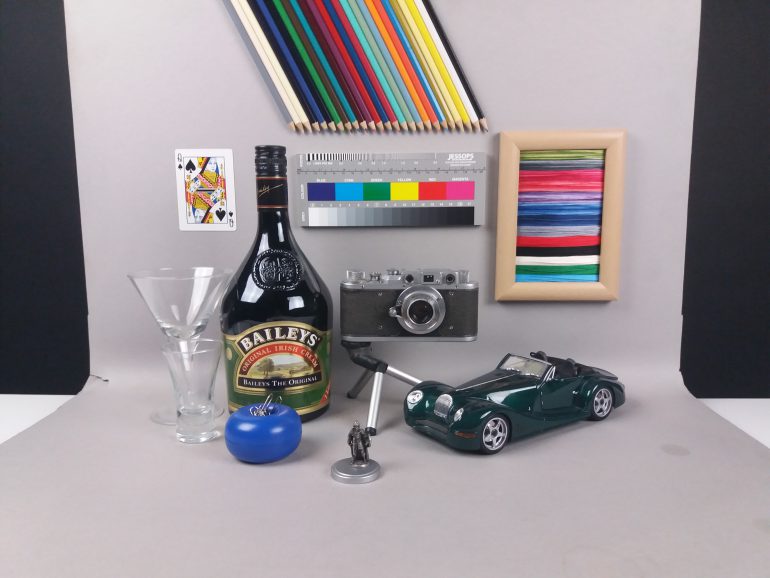

With flash:


Other pictures:





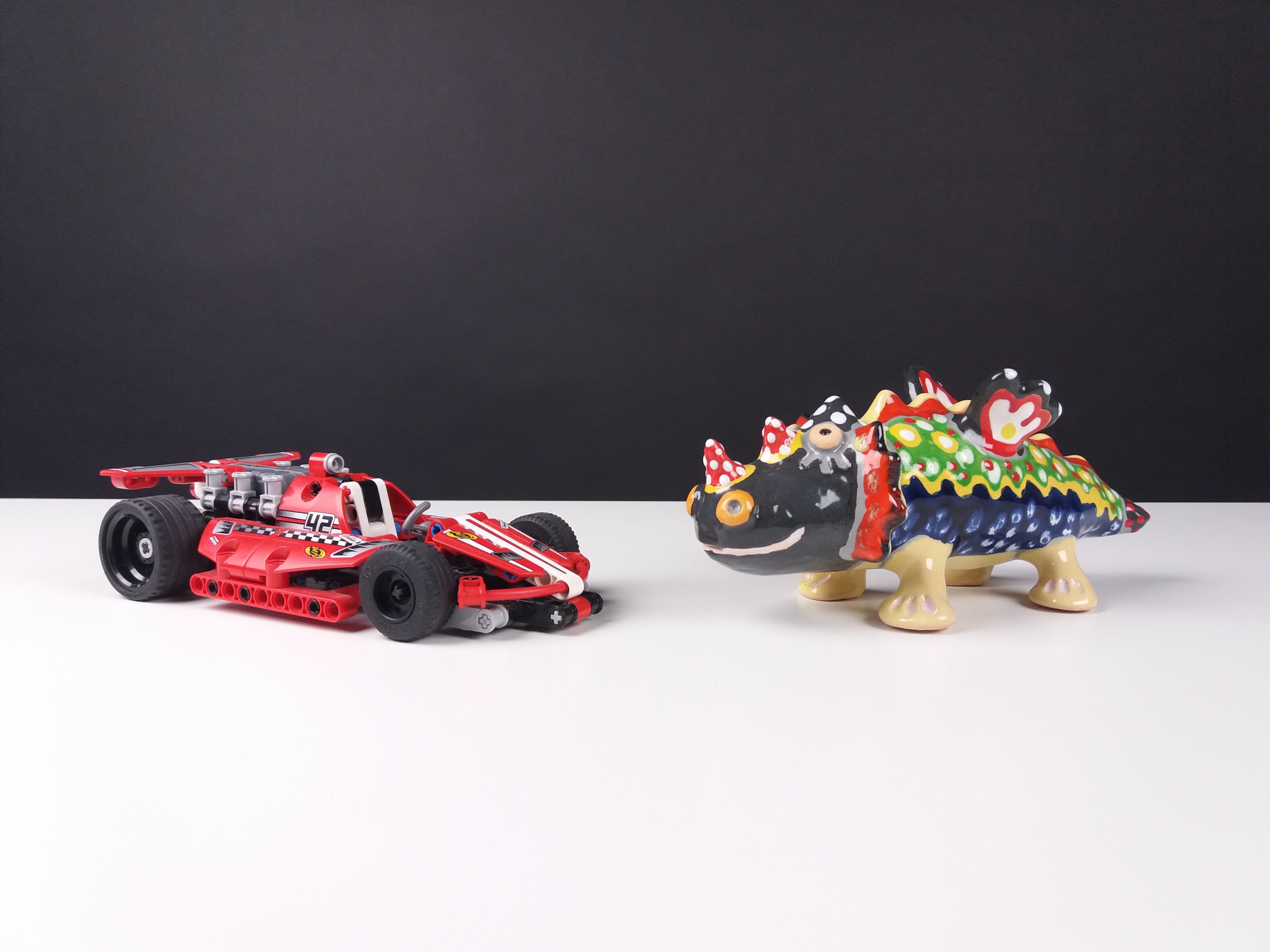
Sample pictures from Galaxy J7 (2016)
In good light:

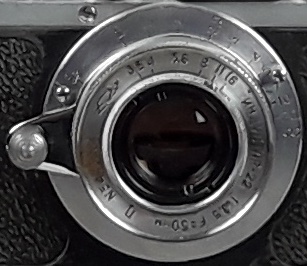
In good lighting HDR:


In poor light:


With flash:


Other pictures:





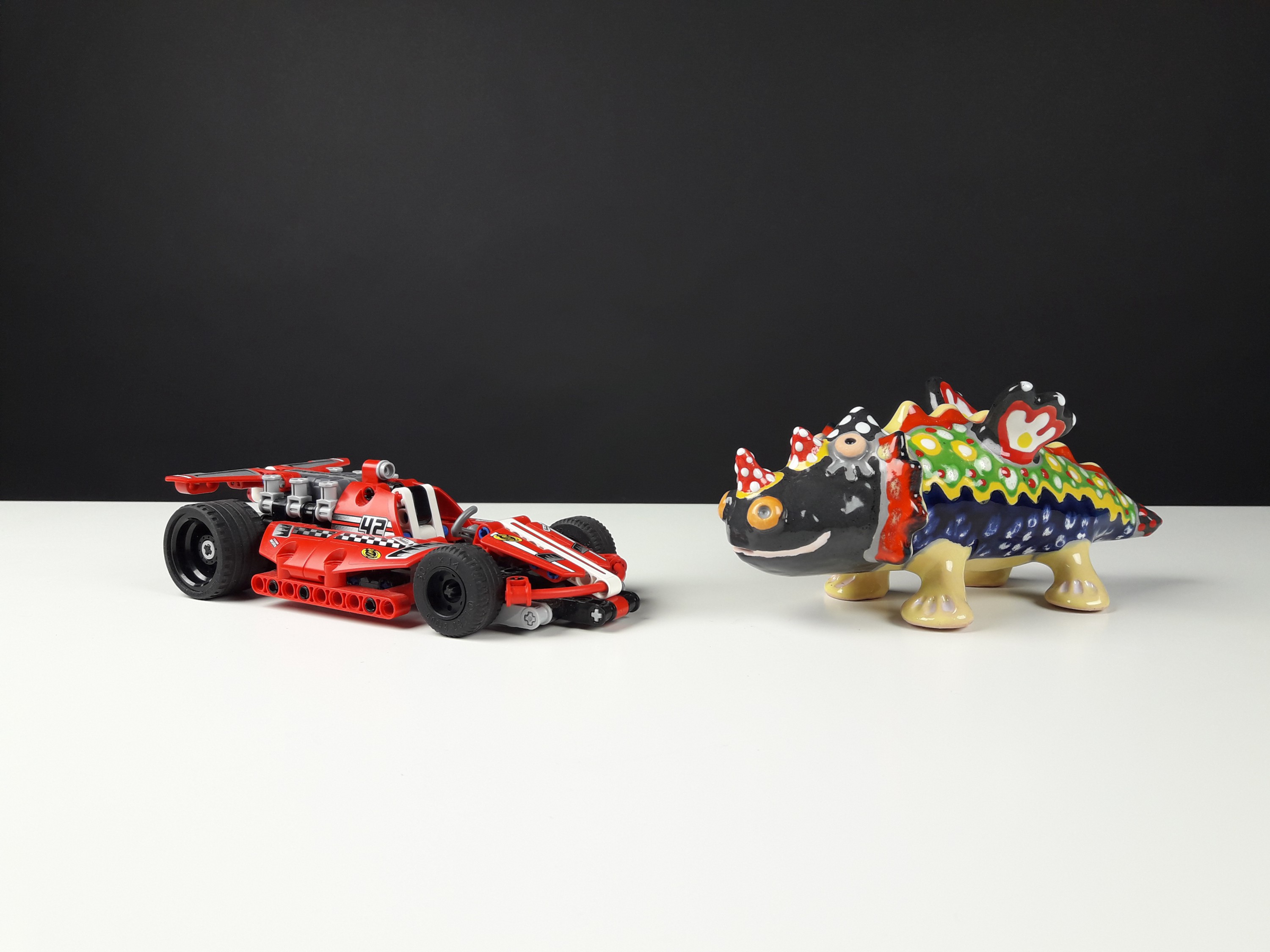
Working hours
The Samsung Galaxy J5 (2016) has a 3100 mAh battery, which will be enough for 1.5 days of smartphone operation with an average load. In the PCMark autonomy test, it lasted 8 hours and 8 minutes.
![]()
The Galaxy J7 (2016) battery has a capacity of 3300 mAh, which is enough for 1.5-2 days of operation. In the PCMark autonomy test, the smartphone worked for 12 hours 34 minutes.
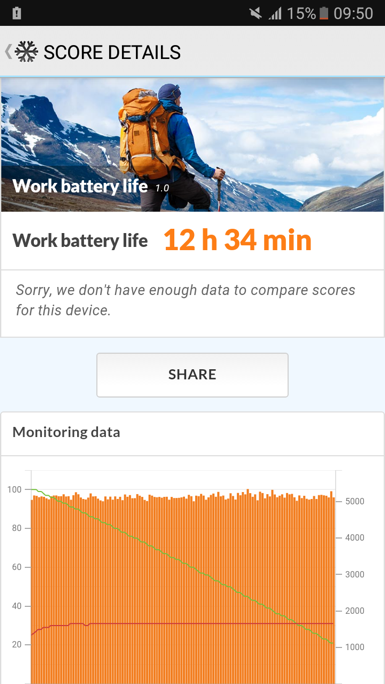
Competitors
In the comments to our reviews, readers often recall chinese smartphones Xiaomi and Meizu, so we decided to compare them with the new products from Samsung in terms of their main characteristics.
Samsung Galaxy J5 vs

| Samsung Galaxy J5 2016 Gold (SM-J510HZDD) 4 285 - 5 499 UAH Compare prices |
Xiaomi Redmi 3 2 / 16GB (Fashion Gold) Notify when on sale |
|
| Type of | Smartphone | Smartphone |
| SIM card type | Micro-SIM | Nano-SIM + Micro-SIM |
| Standard | GSM 900/1800/1900, WCDMA 900/2100 | 2G (GSM), 3G (WCDMA, TD-SCDMA), 4G (TDD-LTE), Telecommunications 2G (CDMA 1X), Telecommunications 3G (EVDO), Telecommunications 4G (TDD / FDD-LTE) |
| High speed data transfer | EDGE / GPRS, HSPA + | GPRS, EDGE, HSPA + |
| Number of SIM-cards | 2 | 2 (or 1 SIM + memory card) |
| Operating system | Android 5.1 (Lollipop) | Android 5.1 with proprietary shell MIUI 7 |
| RAM, GB | 2 | 2 |
| Built-in memory, GB | 16 | 16 |
| Expansion slot | microSD / SDHC (up to 128GB) | Nano SIM card/ Micro SD up to 128 GB (VFAT) |
| Dimensions, mm | 145.8x72.3x8.1 | 139.3 x 69.6 x 8.5 |
| Weight, g | 159 | 144 |
| Dust and moisture protection | – | – |
| Accumulator battery | 3100mAh (removable) | Li-Po, 4100 mAh (non-removable) |
| Opening hours (manufacturer's data) | Talk time: up to 21 hours (3G), audio playback mode: up to 71 hours | listening to music - up to 60 hours, standby mode - up to 264 hours |
| Diagonal, inches | 5,2 | 5 |
| Permission | 720x1280 | 1280 × 720 |
| Matrix type | Super AMOLED | IPS |
| PPI | 282 | 294 |
| Brightness adjustment sensor | + | + |
| Touch screen (type) | + (capacitive) | + (capacitive) |
| CPU | Qualcomm Snapdragon 410 MSM8916 + GPU Adreno 306 | Qualcomm MSM8939v2 Snapdragon 616 |
| Kernel type | Cortex-A53 | Cortex-A53 |
| Number of Cores | 4 | 8 |
| Frequency, GHz | 1,2 | 4 × 1.5 GHz + 4 × 1.2 GHz |
| Main camera, MP | 13 | 13 |
| Filming | 1080p, 30 fps | 1920 × 1080 dots |
| Flash | LED | LED |
| Front camera, MP | 5 | 5 |
| Other | LED flash front camera | 5 lenses, F2.0 aperture, supports fast phase focusing technology, HDR, panorama |
| Wi-Fi | 802.11 b / g / n, Wi-Fi Direct | 802.11 b / g / n, Wi-Fi hotspot, Wi-Fi Direct |
| Bluetooth | 4.1 | 4.1, A2DP |
| Gps | + (A-GPS, GLONASS) | + (A-GPS, GLONASS, Beidou) |
| IrDA | – | + |
| NFC | + | – |
| Interface connector | USB 2.0 (micro-USB) | USB 2.0 (OTG) |
| Audio jack | 3.5mm | 3.5mm |
| MP3 player | + | + |
| FM radio | + | + |
| Type of shell | monoblock (collapsible) | monoblock (non-separable) |
| Body material | metal, plastic | metal |
| Keyboard type | screen input | screen input |
| Yet | proximity and lighting sensors, accelerometer, gyroscope | – |
As you can see, both models have a similar set of characteristics. The diagonal of the display in Redmi 3 is slightly smaller and is 5 inches, versus 5.2 in the Galaxy J5. Picture quality is good on both models, but Super AMOLED screen samsung benefits from higher contrast and less sun fading.
The design of Xiaomi Redmi 3 is non-separable, the user cannot replace the battery on his own, in addition, he will have to choose between using second SIM-cards, as well as a slot for microSD. Galaxy J5 does not have these problems, there are separate slots for two SIM and a memory card, besides this, the battery can be pulled out.
But in terms of performance, the Snapdragon 616 in the Redmi 3 still slightly bypasses the Snapdragon 410 in the Galaxy J5. In the test AnTuTu smartphone Xiaomi scores 33667 points, while Samsung scores 27995. However, in real use, the difference in speed is not so noticeable. Both models are fast for applications, but not suitable for demanding games. For example, World of Tanks both smartphones pull out only at the minimum settings.
In terms of opportunities Galaxy cameras The J5 is slightly inferior to the Redmi 3 in detail in good lighting, but wins when it gets worse.
In good light:


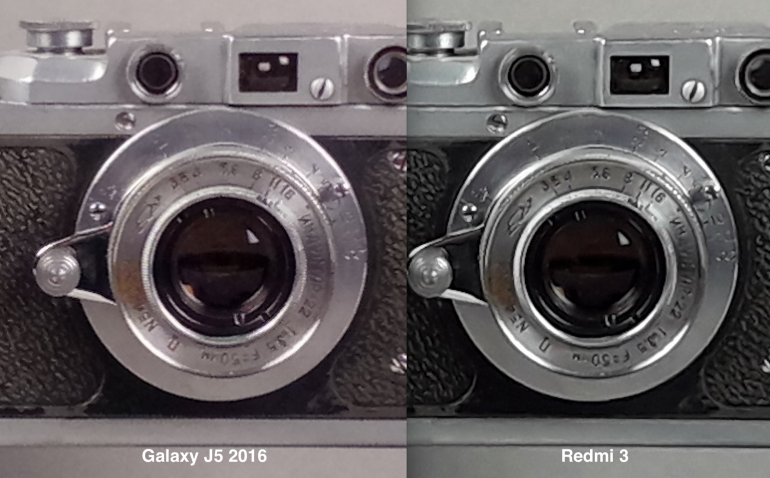
In poor light:



In addition, the Galaxy J5, unfortunately, does not HDR mode, in Redmi 3 it works quite well. But the camera starts and fires in smartphone Samsung faster.
Xiomi Redmi 3 runs Android 5.1 operating system with MIUI 7 shell. Moreover, if you order a smartphone directly from China, then it can go without Google services and localization, you will have to reflash yourself. Another caveat, Chinese stores often set their own MIUI versions of unknown origin. There may also be problems with updating such smartphones, so it is better to immediately look for models with global firmware, in which, although there will be Chinese applications, it should be updated over the air. Galaxy J5 has the most current Android version 6.0.1 with the TouchWiz shell, there are no problems with localization here, as well as updates, they come automatically.
In terms of autonomy, the Redmi 3 performs very well thanks to the 4100 mAh battery, in the PCMark test it lasted about 12 hours. The Galaxy J5 with a 3,100mAh battery has a lower score of 8 hours in PCMark.
The most important advantage of Xiomi Redmi 3 is the price, but this is rather a feature of unofficial and semi-official deliveries, the surcharge for which can result in problems with firmware and service. Samsung Galaxy J5 will obviously be chosen by those who are willing to pay extra for the lack of such nuances.
Samsung Galaxy J7 vs

| Samsung Galaxy J7 Gold (SM-J710FZDU) | ||
| Standard | GSM 850/900/1800/1900, WCDMA 850/900/1900/2100, FDD LTE 2100 (B1) / 1800 (B3) / 850 (B5) / 2600 (B7) / 900 (B8) / 800 (B20) | GSM 850/900/1800/1900, WCDMA 850/900/1900/2100, FDD-LTE |
| High speed data transfer | EDGE / GPRS, HSPA +, LTE | EDGE / GPRS, HSPA +, LTE Cat.6 (UL 50 Mbps / DL 300 Mbps) |
| Number of SIM-cards | 2 | 2 |
| Operating system | Android 6.0 (Marshmallow) | Android 5.1 (Lollipop) |
| RAM, GB | 2 | 2 |
| Built-in memory, GB | 16 | 16 |
| Expansion slot | microSD (up to 128GB) | microSD / SDHC / SDXC (up to 128GB) |
| Dimensions, mm | 151.7x76x7.8 | 153.6 x 75.5 x 8.2 |
| Weight, g | 169 | 163 |
| Dust and moisture protection | – | – |
| Accumulator battery | 3300mAh (removable) | 4100 mAh (non-removable) |
| Opening hours (manufacturer's data) | talk time: up to 23 hours (3G), video playback: up to 21 hours, audio playback: 96 hours | there is no data |
| Diagonal, inches | 5,5 | 5,5 |
| Permission | 720x1280 | 1920 × 1080 |
| Matrix type | Super AMOLED | LTPS |
| PPI | 267 | 403 |
| Brightness adjustment sensor | – | + |
| Touch screen (type) | + (capacitive) | + (capacitive) |
| CPU | Samsung Exynos 7 Octa (7870) + GPU Mali-T830 MP | MediaTek MT6755 (Helio P10) + GPU Mali-T860 MP2 |
| Kernel type | Cortex-A53 | Cortex-A53 |
| Number of Cores | 8 | 8 |
| Frequency, GHz | 1,6 | 4x 1.8 + 4x 1.0 |
| Main camera, MP | 13 | 13 |
| Filming | 1080p, 30 fps | 1080p, 30 fps |
| Flash | LED | double led |
| Front camera, MP | 5 | 5 |
| Wi-Fi | 802.11 b / g / n, Wi-Fi Direct, ANT + | 802.11 a / b / g / n |
| Bluetooth | 4.0 | 4.0 |
| Gps | + (GLONASS, Beidou) | + (A-GPS, Glonass) |
| IrDA | – | – |
| NFC | + | – |
| Interface connector | USB 2.0 (micro-USB) | USB 2.0 (micro-USB) |
| Audio jack | 3.5mm | 3.5mm |
| MP3 player | + | + |
| FM radio | + | + |
| Type of shell | monoblock (collapsible) | monoblock (non-separable) |
| Body material | metal, plastic | metal |
| Keyboard type | screen input | screen input |
| Yet | proximity sensor, accelerometer, hall sensor | proximity and lighting sensors, accelerometer, E-compass, gyroscope, mTouch 2.1 fingerprint scanner |
| Other | – | protected glass T2X-1 |
Both smartphones have similar body sizes due to the same display diagonal. In the M3 Note, almost the entire rear part is metal, but the case, like that of Redmi 3, cannot be disassembled. In addition, the user will also have to choose between installing a second SIM or microSD cards... The construction of the Galaxy J7 is the same as the J5, the battery is removed here, there is a separate slot for the memory card.
Both models have a 5.5-inch display. The M3 Note has an IPS matrix with Full resolution HD. In this plan Meizu smartphone bypasses the Galaxy J7 with HD resolution. However, the quality of the Super AMOLED screen itself is slightly better, both in terms of factory calibration and behavior in the sun.
The performance of smartphones is on the same level, both models gain about 43 thousand points in the AnTuTu test. But their platforms are different. Meizu M3 Note has Helio P10 with Mali-T860 MP2 graphics, while Galaxy J7 has Exynos 7 Octa (7870) and Mali-T830 MP. The devices do a good job of running applications, and can even provide decent gaming performance.
Both smartphones have 13-megapixel cameras, but the Galaxy J7 takes more detailed pictures in both low and good lighting. In general, the camera is not strong point M3 Note.
In good light:


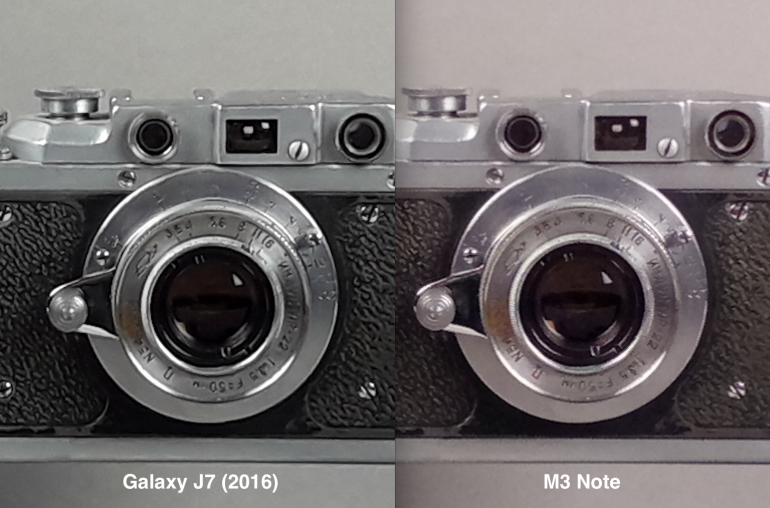
In poor light:



Here's where the Meizu smartphone really surpasses Samsung, is the presence of a quite good fingerprint scanner. The Korean company has not yet decided to install fingerprint scanners in entry-level smartphones so as not to compete with older models.
The Meizu M3 Note is running the Android 5.1 operating system with the Flyme shell, which is quite different from the standard one in Android. As with Xiaomi, there is a version with both Chinese firmware, without Google services, and international, in which there should be no problems with localization and updates. At the same time, due to the fact that the smartphone has only one button, easy way activation Google service Unfortunately, there is no now in it. Galaxy J7 has operating system Android 6.0.1 with TouchWiz shell, it has a standard control with three function buttons, and is also updated over the air.
The Meizu M3 Note uses a 4100 mAh battery, while the Galaxy J7 has a 3300 mAh battery. Nevertheless, the higher display resolution in this regard does not play into the hands of the M3 Note, in the PCMark battery test it lasted 9 hours 33 minutes, while the J7 - 12 hours 34 minutes.
As with the Redmi 3, the cost of the M3 Note is noticeably lower than the Galaxy J7. The user will have to choose: either the display is more high resolution and a fingerprint scanner, or best camera, a separate slot for memory cards and a higher autonomy. At the same time, it should be noted that Samsung's service support is still better than that of Meizu. Whether it is worth overpaying for these benefits is up to everyone to decide for himself.
Colour
Determining the type of device (phone or smartphone?) Is quite simple. If you need a simple and inexpensive device for calls and SMS, it is recommended to opt for a telephone. A smartphone is more expensive, but it offers a wide variety of options: games, videos, the Internet, thousands of programs for all occasions. However, its battery life is significantly shorter than that of a simple phone.General characteristics
Type of
Screen
Screen type color AMOLED, 16.78 million colors, touch Type of touch screen multitouch, capacitive Diagonal 5.2 inches. Image size 1280x720 Pixels Per Inch (PPI) 282 Automatic screen rotation there isMultimedia capabilities
Rear camera 13 MP Flash front and rear, LED Rear camera functions autofocus Video recording there is Max. video resolution 1920x1080 Max. video frame rate 30 frames / s Front-camera yes, 5 million pixels. Audio MP3, AAC, WAV, FM radio Headphone jack 3.5 mmConnection
Standard
There are several basic standards cellular communication that are supported by modern phones. On the territory of Russia, the GSM standard is used almost everywhere. For high-speed data transmission, 3G and 4G LTE standards are used - the highest speed of the existing standards. Glossary of Terms by Category Mobile Phones
GSM 900/1800/1900, 3G, 4G LTE Support for LTE bands FDD LTE: 2100, 1800, 850, 900, 800 MHz; TDD LTE: 2300 MHz Interfaces
Almost all modern smartphones have Wi-Fi and USB interfaces. Bluetooth and IRDA are less common. Wi-Fi is used to connect to the internet. USB is used to connect the phone to a computer. Many phones also have Bluetooth. It is used to connect wireless headphone, to connect the phone to wireless speakers as well as for file transfer. A smartphone equipped with an IRDA interface can be used as universal remote control Remote Control Glossary of Terms by Category Mobile Phones
Wi-Fi 802.11n, Wi-Fi Direct, Bluetooth 4.1, USB, ANT +, NFC Satellite navigation
Built-in GPS modules and GLONASS allow you to determine the coordinates of the phone using signals from satellites. In the absence of GPS modern smartphone can determine its own location based on signals from base stations cellular operator... However, finding coordinates based on signals from satellites is usually much more accurate.
GPS / GLONASS / BeiDouMemory and processor
CPU
V modern telephones and smartphones usually use special processors - SoC (System on Chip, system on a chip), which, in addition to the processor itself, are located graphics core, memory controller, controller of input-output devices, etc. Therefore, the processor largely determines the set of functions and performance of the device. Glossary of terms for the category Mobile phones
1200 MHz Number of processor cores 4 Built-in memory
Built-in memory is used to store programs, music, photos, movies. The amount of built-in memory largely determines the cost of the device. If your phone does not have a memory card slot, it is recommended that you select the model with more internal memory.
16 GB RAM size 2 GB Memory card slot













